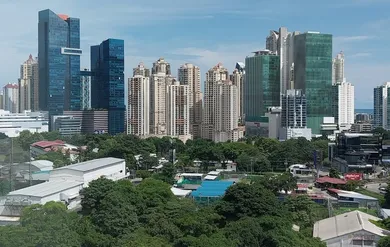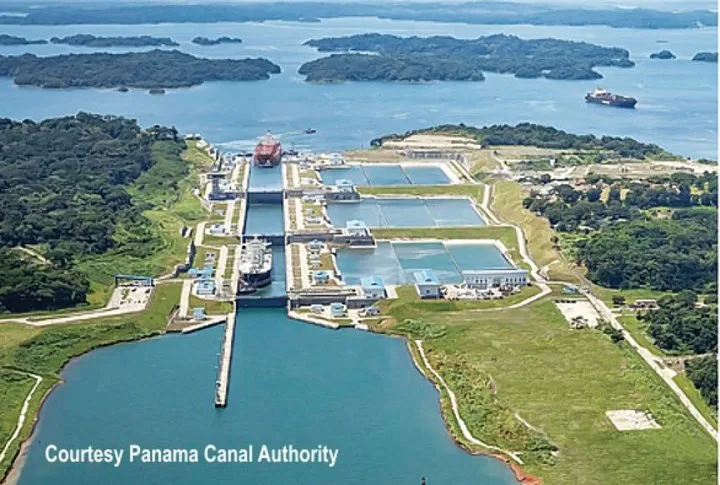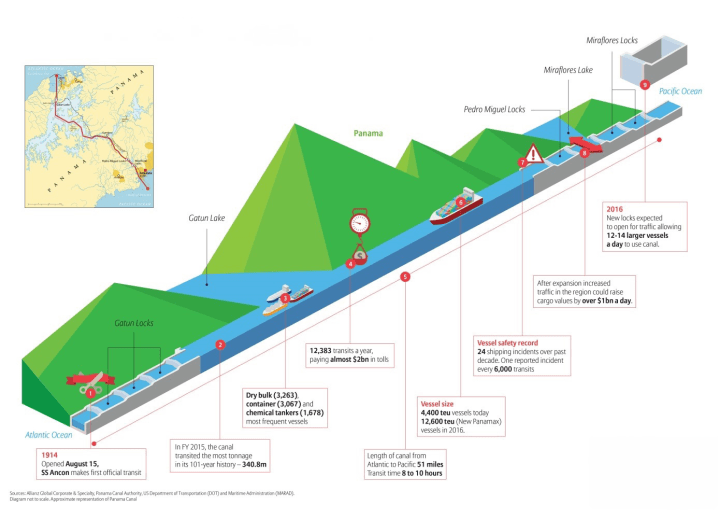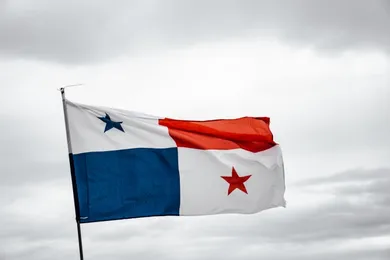
Panama City: Panamas historic and welcoming capital city
Panama City is beautiful, modern and captivating. This is the reason why in 2023 thousands of retirees chose this city as their retirement destination.

The Panama Canal is a demonstration of the human genius and its tireless search for beauty. It stands out not only for its monumental structure, but also for its history. The history of the Panama Canal is exciting and complex at the same time.
September is an excellent date to celebrate this majestic work of engineering. It is a very significant month for Panamanians because trough different years it brought them the joy of owning the Canal and seeing its tremendous impact as it expands in importance.
Would you like to travel the almost 80km length of the canal for the next 3 minutes and appreciate for yourself this wonder of the Modern world?

The history of the Panama Canal dates back to 1534. The King of Spain Carlos V was well aware of the existence of the isthmus of Panama and suggested the creation of a canal route.
In 1880, the French were in charge of materializing the project, but after 20 years of hard construction work they gave away their rights for 40 million to the United States of America. During 1903 and 1904, the United States managed to buy the canal and was mainly responsible for its administration from 1904 to 1999. About a century!
The Panama Canal was inaugurated on August 15th, 1914. And so, an interoceanic route capable of connecting the Atlantic Ocean with the Pacific Ocean emerged for the first time.
Thanks to this new canal, the ships had the possibility to transit 80 km instead of traveling approximately 15,000 km around South America. A trip of shorter distance, shorter duration and therefore lower expenses!

On September 7, 1977, President Jimmy Carter and his counterpart Omar Torrijos signed the treaty that allowed Panama to acquire sovereignty over the Canal. Although it took several decades for that transition to be legitimate.
In September 2007, the expansion works of the Panama Canal were re-started, and then completed after 9 years. The grand re-opening took place on June 26th, 2016. The expansion of the Panama Canal allowed larger vessels such as container ships to transit with ease and efficiency.
Nowadays the history of the Panama Canal is still complicated and so it finds itself in an ever-changing and growing development.

The Panama Canal is 80 km long. Due to the heavy traffic and the 180 sea routes it connects together, moving from one end to the other can take between 8 to 10 hours. Very little time considering the time that takes traveling around South America.
The length of the canal is related to the locks. The locks are chambers or enclosures with entrance and exit doors that are filled with water to facilitate the transportation of ships. The size varies depending on the vessel.
The design of the locks of the Panama Canal are inspired by the model used in the de St. Lawrence Canal from United States-Canada. The Panamax locks are 33.5 meters wide and have a length of 304. 8 meters, while the Neopanamax are 55 meters wide and 424 meters long.
There is a change in elevation of the Panama Canal. This is due to the fact that the level of the Pacific Ocean is higher than that of the Atlantic Ocean. The locks are responsible for compensating for the difference in level between the two oceans to allow ships to pass through. The elevation of the Panama Canal changes when the locks are filled with water.
Thanks to the genius of the human mind the Panama Canal currently has a reach of 170 countries, 180 connected sea routes and 1920 ports involved.

This is one of the most frequent questions we get asked about the Panama Canal. As we mentioned earlier, the channel was owned at some point for a brief period of time by a French company but the United States government were the ones who managed it for almost a century.
On September 7th, 1977, Panama acquired the sovereignty of the Canal; however, that transition didn’t took place until several years. Partly because the United States invested about 375 million during its construction and would not let go of such large investment so easily.
On an early stage, the person in charge of administrative responsibilities was an American citizen while a Panamanian citizen was in charge of the sub-directorate of the canal. In the second stage the positions were reversed, leaving the maximum responsibility in the hands of Panamanian executives.
Currently the Panama Canal belongs to the Panamanian people and the entity that is responsible for the administration duties, operations and maintenance is known as: The Panama Canal Authority.
Not commonly known is the fact that the two oceans have different sea levels, and different levels of high tide. At the entrance to the Panama Canal, the Pacific Ocean can rise as much as 20 feet, but 45 miles away, the difference between high tide and low in the Atlantic is just three feet.

Did you know that the Panama Canal is not only useful as an engineering work for commerce and navigation, but also a tourist attraction for national and international travelers?
Well let us tell you, there are many cruises through the Panama Canal that allows you to appreciate this monumental work of engineering and it is exciting, both for locals and tourists, to get to know two different oceans in just under 10 hours.
In addition, the Panama Canal is surrounded by a natural beauty. So the visitor is able to contemplate two different environments; on the one hand, the ingenious human work and on the other, the wonders of creation.
Every year, travelers from all over the world embark on cruises through the Panama Canal to get to know this wonder of the Modern world. Not only for its technical and commercial value, but also for the richness that a story full of sacrifices, conflicts and victories brings.
Would you like to live this experience? Do you dare to embark on the adventure of getting to know by first hand the Panama Canals?

Panama City is beautiful, modern and captivating. This is the reason why in 2023 thousands of retirees chose this city as their retirement destination.

Panama is consistently ranked as the #1 place to retire. No Panamanian tax. Amazing benefits. Safe. Gentle climate. No hurricanes or volcanoes